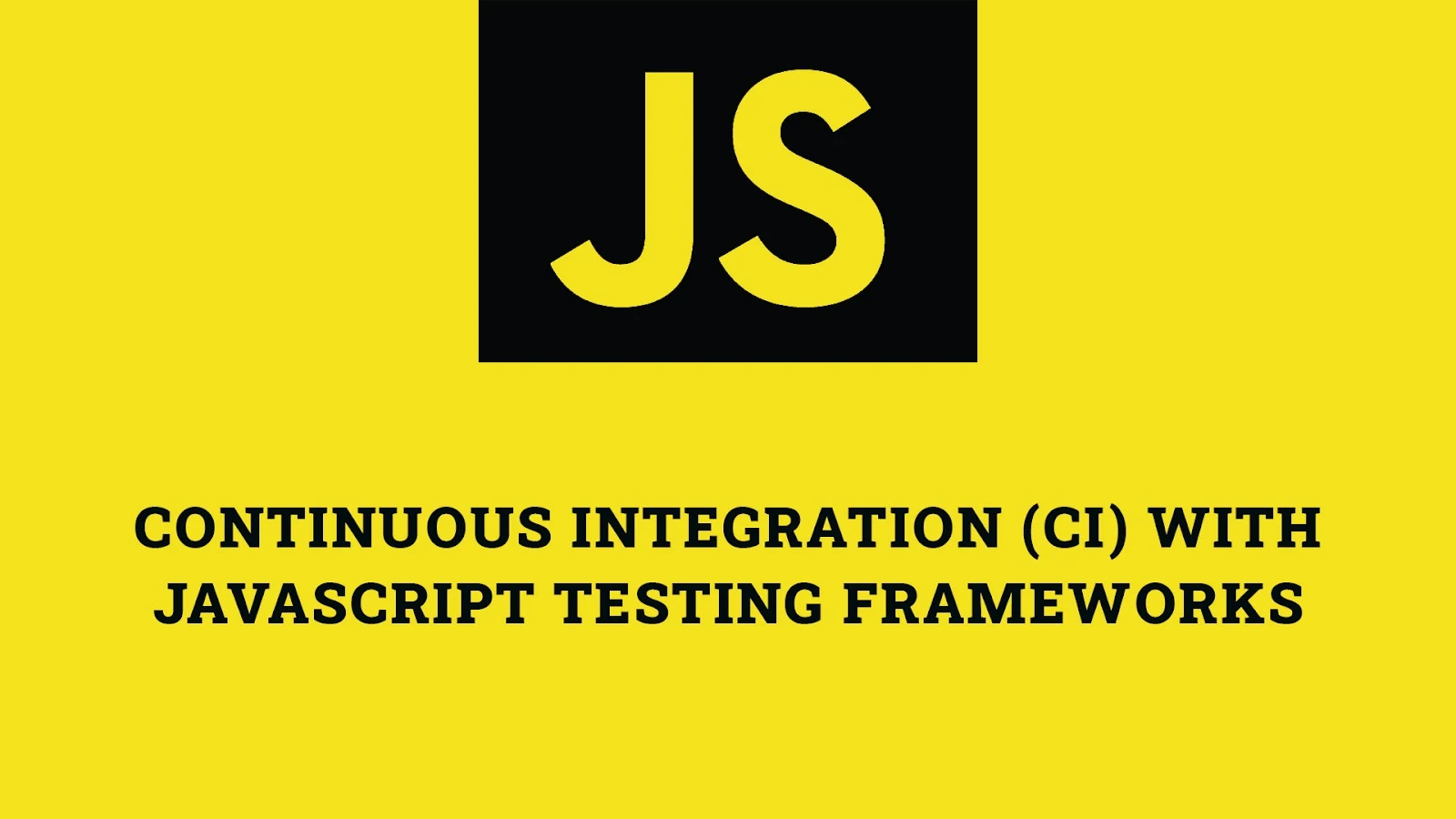Introduction
Continuous Integration (CI) is a development practice that involves automatically building and testing code changes frequently to ensure the codebase remains stable and reliable. In the context of JavaScript development, CI is often used with testing frameworks to automate the execution of tests whenever code changes are made. This article explores how to implement Continuous Integration with JavaScript testing frameworks, providing detailed explanations and practical examples to help you master this practice.
Understanding Continuous Integration
Continuous Integration is a development practice that involves integrating code changes into a shared repository frequently, often multiple times a day. Each integration is automatically verified by building the code and running tests to detect integration errors early.
Key Benefits of Continuous Integration
- Early Bug Detection: Identifying and fixing bugs early in the development process.
- Improved Code Quality: Ensuring that the codebase remains stable and reliable.
- Faster Development Cycles: Reducing the time it takes to detect and fix issues.
- Continuous Feedback: Providing developers with instant feedback on the quality of their code.
Setting Up a CI Environment
To implement Continuous Integration, you need to set up a CI environment that automatically builds and tests your code. There are several CI tools available, such as Jenkins, Travis CI, CircleCI, and GitHub Actions. This section provides an example of setting up a CI environment using GitHub Actions.
Example: Setting Up GitHub Actions
// Create a .github/workflows directory in your repository
// Create a ci.yml file in the .github/workflows directory
name: CI
on:
push:
branches: [ main ]
pull_request:
branches: [ main ]
jobs:
build:
runs-on: ubuntu-latest
steps:
- name: Check out the repository
uses: actions/checkout@v2
- name: Set up Node.js
uses: actions/setup-node@v2
with:
node-version: '14'
- name: Install dependencies
run: npm install
- name: Run tests
run: npm testIn this example, GitHub Actions is configured to run a CI workflow whenever code is pushed to the main branch or a pull request is opened against the main branch. The workflow includes steps to check out the repository, set up Node.js, install dependencies, and run tests.
Writing and Running Tests
To ensure that your code is thoroughly tested, you need to write and run tests using a JavaScript testing framework. Jest is a popular choice for testing JavaScript code, providing an easy-to-use API and powerful features for writing and running tests.
Example: Writing a Basic Test with Jest
// sum.js
function sum(a, b) {
return a + b;
}
module.exports = sum;// sum.test.js
const sum = require('./sum');
test('adds 1 + 2 to equal 3', () => {
expect(sum(1, 2)).toBe(3);
});In this example, a basic test is written using Jest. The test checks that the sum function correctly adds 1 and 2 to equal 3. This test will be run automatically as part of the CI workflow.
Integrating Code Coverage
Code coverage is a measure of how much of your code is covered by tests. Integrating code coverage into your CI workflow helps ensure that your tests are comprehensive and that important parts of your codebase are tested.
Example: Integrating Code Coverage with Jest
// Add the following configuration to your package.json file
{
"scripts": {
"test": "jest --coverage"
}
}Example: Configuring GitHub Actions for Code Coverage
name: CI
on:
push:
branches: [ main ]
pull_request:
branches: [ main ]
jobs:
build:
runs-on: ubuntu-latest
steps:
- name: Check out the repository
uses: actions/checkout@v2
- name: Set up Node.js
uses: actions/setup-node@v2
with:
node-version: '14'
- name: Install dependencies
run: npm install
- name: Run tests with coverage
run: npm testIn this example, Jest is configured to run tests with code coverage using the --coverage flag. The GitHub Actions workflow is updated to run tests with coverage as part of the CI process.
Running CI on Multiple Node.js Versions
Ensuring compatibility with multiple Node.js versions is important for maintaining a robust and flexible codebase. You can configure your CI workflow to run tests on multiple Node.js versions.
Example: Configuring GitHub Actions for Multiple Node.js Versions
name: CI
on:
push:
branches: [ main ]
pull_request:
branches: [ main ]
jobs:
build:
runs-on: ubuntu-latest
strategy:
matrix:
node-version: [ 12, 14, 16 ]
steps:
- name: Check out the repository
uses: actions/checkout@v2
- name: Set up Node.js
uses: actions/setup-node@v2
with:
node-version: '${{ matrix.node-version }}'
- name: Install dependencies
run: npm install
- name: Run tests
run: npm testIn this example, the GitHub Actions workflow is configured to run tests on Node.js versions 12, 14, and 16 using a matrix strategy. This ensures that your code is compatible with multiple Node.js versions.
Fun Facts and Little-Known Insights
- Fun Fact: The concept of Continuous Integration was first proposed by Grady Booch in his 1991 book "Object-Oriented Analysis and Design with Applications."
- Insight: Integrating CI into your development workflow can significantly reduce the time it takes to detect and fix bugs, improving overall productivity and code quality.
- Secret: Using CI tools like GitHub Actions, you can automate not only testing but also other tasks such as code linting, formatting, and deployment, creating a fully automated and seamless development pipeline.
Conclusion
Implementing Continuous Integration with JavaScript testing frameworks helps ensure that your codebase remains stable, reliable, and high-quality. By understanding the key benefits of CI, setting up a CI environment, writing and running tests, integrating code coverage, and running CI on multiple Node.js versions, you can create a robust CI pipeline that automates the testing process and provides continuous feedback. Mastering CI will enable you to build more reliable software and improve your development process, ultimately leading to higher-quality code and a better development experience.
 Reviewed by Curious Explorer
on
Saturday, November 30, 2024
Rating:
Reviewed by Curious Explorer
on
Saturday, November 30, 2024
Rating:




No comments: